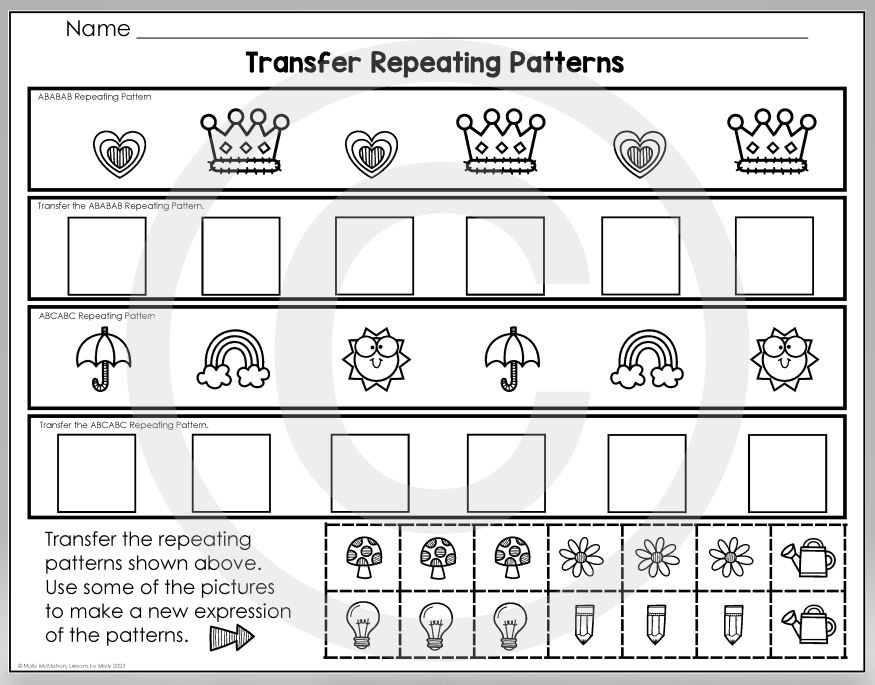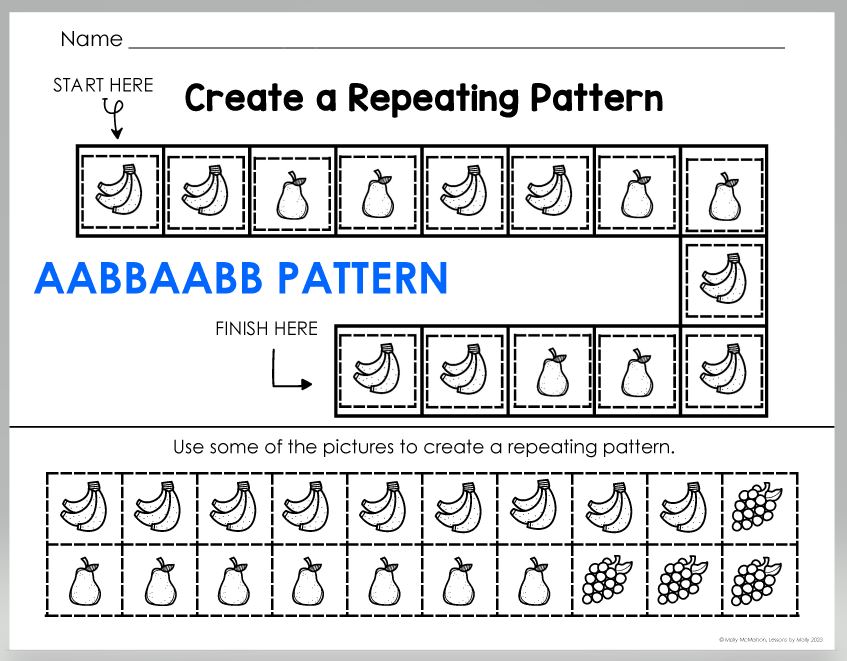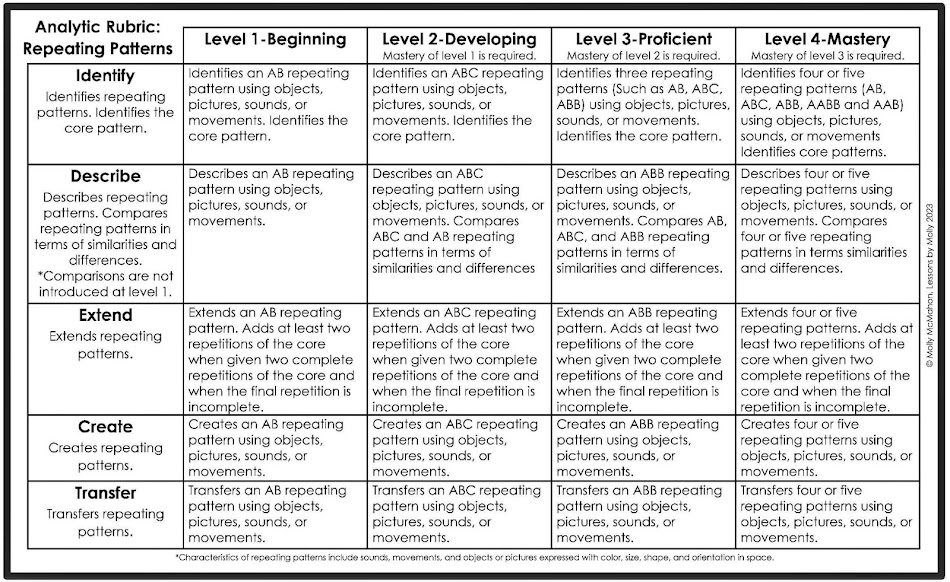Introduction
In today's blog post, we focus again on the Virginia Standard of Learning (2016) for kindergarten math (K.13). It says, "The student will describe, extend, create, and transfer repeating patterns." The Curriculum Framework provided by the Virginia Department of Education suggests analyzing patterns in practical situations like calendars, seasons, and days of the week. We encounter challenges when the actual patterning exceeds the recommended maximum repetition of four elements - AB, ABC, AABB, ABB, and AAB and with only three unique components - A, B, and C. This post addresses this issue and provides alternative solutions to engage students in pattern exploration.
Analyzing Patterns of Time
Traditionally, the days of the week and the months of the year are examples of practical situations for pattern analysis. However, both present a challenge as the number of unique elements exceeds the recommended maximum of three individual components in the patterning structure. The days of the week, consisting of seven parts (Sunday, Monday, Tuesday, Wednesday, Thursday, Friday, and Saturday), are not represented by the suggested pattern types. Neither are the months of the year due to the presence of twelve unique elements. This time pattern exceeds the guideline of a maximum of three distinguishable features and a maximum of four parts of the core. Most kindergartners will need help analyzing patterns at this level of intricacy. Considering the natural progression of time, it would take a full year to complete, which may not align with the desired learning time frame in the curriculum. Similarly, the seasons also have difficulty fitting into a pattern, as they, too, require a full year to complete the cycle before the occurrence of a natural repeat.
Exploring Alternative Patterns of Time
We can consider alternate situations that align with the recommended pattern structures to address this challenge. One such example is the pattern of day and night, which we observe repeatedly in our daily lives. By representing it as an ABABAB pattern, students can analyze and describe the alternating sequence of day and night, fostering their pattern recognition skills.
Another example is the pattern of breakfast, lunch, and dinner. Mealtimes repeat in an ABCABC pattern throughout the week. By engaging students in an activity where they draw one food they ate for each meal and repeat these three times a day, they can actively observe and analyze the ABCABC pattern in their meal schedules on a weekly recording sheet. This experiential approach aligns with the pattern types for kindergarten and promotes awareness of their daily routines.
Exploring Concise Cyclical Patterns for Young Children
Explore short cyclical events that align with five and six year olds level of understanding. For instance, a traffic light can teach children about patterns through the colors (red, yellow, and green) and positions (top, middle, and bottom). The repeating pattern starts with red at the top, followed by yellow in the middle, and green at the bottom. Children can learn to recognize and predict the next color and position, fostering pattern recognition skills and critical thinking.
Natural and Man-Made Patterns
To further expand students' pattern exploration, we can encourage them to observe natural patterns. Nature offers a wealth of examples, such as the stripes on a zebra's fur or by viewing the tail of a ring-tailed lemur.
These stripe designs can be analyzed using the ABABAB pattern Students can also examine patterns in everyday objects such as the stripes on their shirts, the design on the American flag, or even the striped patterns found on watermelons or gourds.
Natural and manufactured patterns allow students to extend their understanding of repeating patterns beyond the limitations presented by days of the week, the months of the year, and seasons.
Conclusion
While the Curriculum Framework encourages exploring patterns in practical situations like calendars, seasons, and days of the week, the challenges posed by their structure often exceed the recommended core patterns of AB, ABC, AABB, ABB, and AAB. We can offer engaging activities by introducing alternative practical problems like day and night. We can encourage students to observe patterns in nature, in everyday objects and in events. This approach broadens students' pattern recognition skills and nurtures their ability to identify, describe, extend, create, and transfer repeating patterns in contexts that are not contrived.
© 2023 Molly McMahon, Lessons by Molly
(References: 1. Virginia Department of Education, Standards of Learning, 2016.)




















